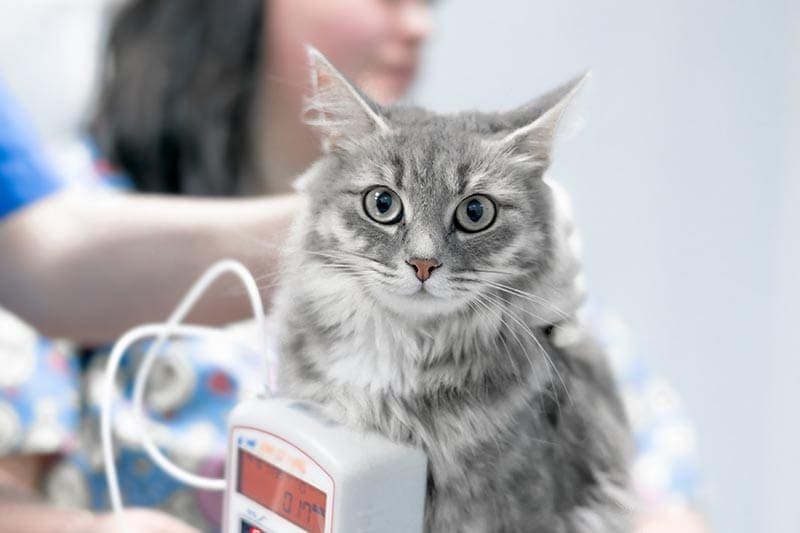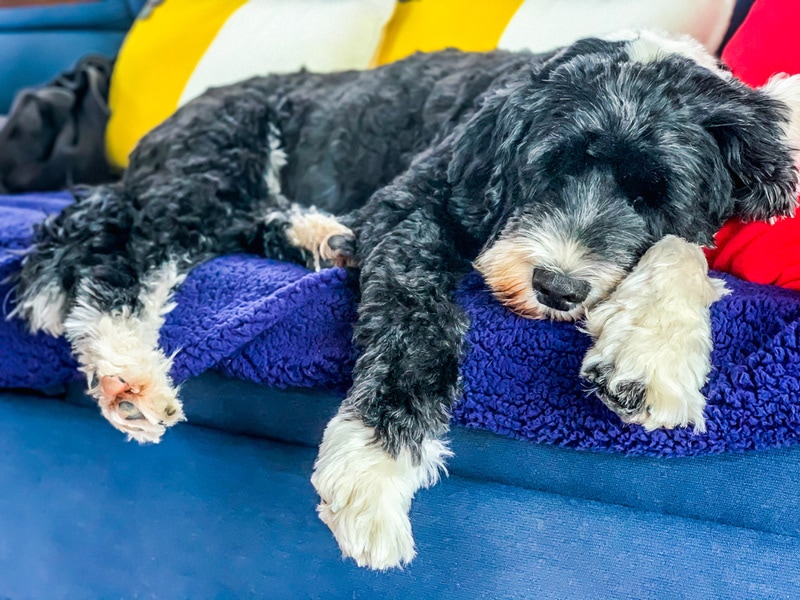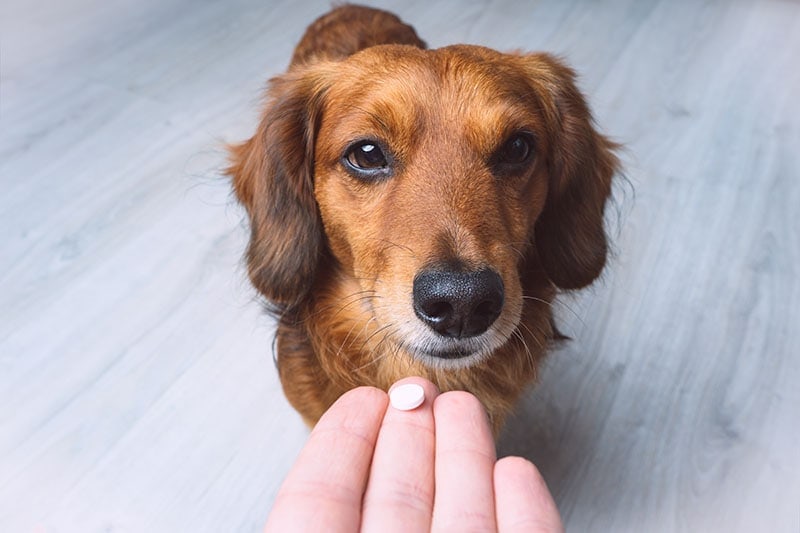Runt of the Cat Litter: How to Tell, Health Facts & FAQs (Vet Answer)
Updated on
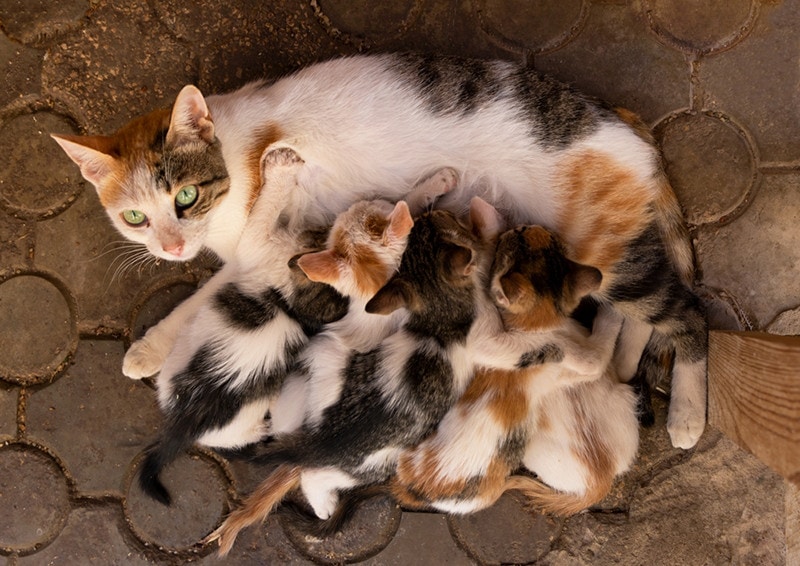
Getting to meet young kittens is one of life’s many joys. When you have the privilege to handle a new litter of kittens, you might note one is smaller than the rest. This runt of the litter is usually easy to identify, but what exactly makes a runt a runt? The term has a long history and can imply not just that the kitten is smaller than the rest of the litter but that something is wrong with them. Is that true?
We all know someone who will happily tell stories about how their very large cat used to be the runt of the litter and is now bigger than the rest. Is that even possible? Read on to learn all about the runt of a kitten litter and just what that might mean for their health and size long-term.
What Defines the Runt of a Cat Litter?
It may surprise you that there is no one agreed-upon definition of a runt. The runt of a cat litter is the smallest kitten in the litter. When we say smallest, we mean having the lowest birth weight. For some, this means every litter has a runt (if there is more than one kitten).
Usually, a runt is appreciably smaller than the rest of the litter rather than the smallest. There is no specific cutoff that decides a litter has a runt, though kittens that weigh less than 25% of a litter’s average weight are at higher risk for health complications, so this could be a useful way to decide.
Functionally, there can be many other relevant ways to decide to call a kitten a runt, such as low birth weight paired with poor health or kittens with low birth weight that continue to lag behind the weight of the other litter mates beyond the first couple days. Usually, kittens born about the same weight as the rest of the litter that fail to gain weight later would not be considered a runt.
What Causes a Kitten to Be a Runt?

Low birth weights in kittens can be due to genetics, complications from the mother, or illness with the kitten.
- Genetics: If a large cat breed is bred with a small cat breed, differences in the weights of the kittens is to be expected. Some genetic abnormalities may lead to lower birth weight kittens also.
- Complications from the mother: Large litter sizes are more likely to experience uterine crowding, with more limited access to the placenta for one or several kittens. With fewer nutrients available during development, these kittens will be born smaller. Health conditions of the mother, such as being over or under-weight, untreated endocrine or infectious diseases, a stressful pregnancy, or poor nutrition, can increase the chances of having a runt.
- Diseases the kitten has: Kittens with shunts (abnormal blood supply to parts of the body) will usually have low birth weights and struggle to thrive. Other congenital abnormalities in the heart or brain would be likely to cause low birth weights in kittens. Kittens exposed to infectious agents in the womb, such as panleukopenia, can be born with health conditions that include low birth weight too.
Health Concerns With the Runt of a Cat Litter
While it is important to note that not all runts will have any extra health complications in their life, birth weight is still the largest predictor of survival of neonatal kittens. Low birth weight has been linked to an increased risk of the following complications for kittens:
- Hypoglycemia – low blood sugar
- Hypothermia – low body temperature
- Hypoxia – low blood oxygen
- Bacterial septicemia – infection of the blood/total body due to bacteria
- Pneumonia – infection in the lungs
Hypoglycemia: Runts can struggle to compete with siblings for access to milk during feedings. Since neonatal kittens have very small fat or sugar stores and higher metabolic demands than adults, missing even a single feeding can cause hypoglycemia, which can lead to seizures, low body temperature, even less strength available for the next feeding, and death.
Hypothermia: Neonatal kittens are not able to control their body temperature until they are at least a week old, and this continues to be a high-risk issue until they are about a month old. Hypothermic kittens cannot digest food appropriately and can become lethargic and pass away in their sleep.
Hypoxia: Episodes of lack of oxygen are almost always related to the birth itself and are rarely a complication later. Prolonged time in the birth canal, complications with the umbilical cord, early separation of the placenta, abnormal birthing position, and C-sections are all possible reasons for a kitten to experience hypoxia. Runts are more likely to pass away when they become hypoxic.
Bacterial Septicemia: While newborn kittens are supposed to be exposed to new bacteria immediately after birth and populations of bacteria will set up shop all over their body, some bacteria are supposed to be found on or within a kitten, while others are not. For runts, if they are immunocompromised, even typically “normal” populations of bacteria can pose a health risk to them.
Pneumonia: Kittens may develop infectious pneumonia, like above, or aspiration pneumonia, which is when milk enters the lungs. Runts that try to suckle in abnormal positions or ways due to lack of strength have a greater risk of developing pneumonia.
How to Help a Runt
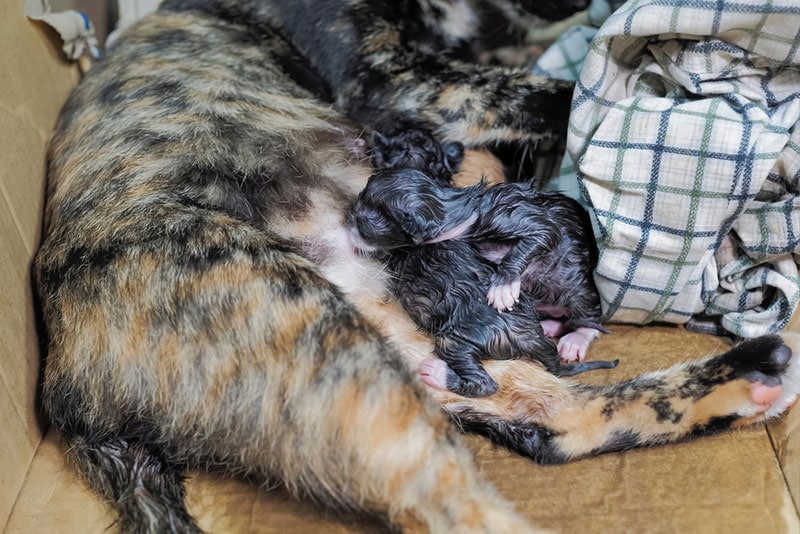
Whether a runt is already showing signs of illness or just has a low weight compared to their littermates, human help can make or break survival for a runt.
- The most important first step to helping a runt is making sure they stay with the litter and mother, if at all possible, warm, dry, and checked for any abnormalities immediately after birth.
- After birth, initial feedings with mom are incredibly important to the health of the litter, even more so for the runt. Colostrum is the term for a special type of milk the mom produces that allows her to share antibodies with the kittens to build their immune system. In cats, they produce colostrum for the first 24-72 hours after birth. Runts who do not adequately drink this colostrum will struggle to thrive and fend off infections going forward and have a poor prognosis. Colostrum is thicker than the normal milk that mom produces and runts struggling to drink adequate volumes of milk during this period is associated with poor outcomes for the runt.
- If you are sure to be present during feedings the first couple of days after birth, you can make sure the runt has access to the fullest teat (easiest to drink from) and is not struggling to compete with their siblings.
- If you have a runt failing to gain weight due to feeding complications, you can supplement what they eat with milk replacer while still allowing them to feed from mom. The best way to do this is to separate the litter into two groups and at feedings, alternate feeding one group with a replacer instead. Runts that are rejected by their mom can be fed milk replacer, but expect slower growth compared to siblings feeding from mom. It takes them about 50% longer to double their weight on milk replacers even if they are getting the same amount of calories.
- It is best to track the weight of newborn kittens every 12 hours for the first week, then once daily to help with early signs of problems for the kittens, including the runt.
Are All Runts Sickly?
Not at all! Many runts will not develop complications due to their weight and they are capable of quickly catching back up to their siblings’ weight or even becoming the heaviest. The underlying cause for their low birth weight and the type of special care they can receive can impact the chances of health complications due to their weight.
Will Runts Always Have Health Problems?

While runts are at risk for being “poor doers” that seem to continue to suffer health complications throughout their life, by no means is this guaranteed. Old practices used to choose to euthanize runts rather than invest extra time and care in them, for worry of them only continuing to need extra care the rest of their lives too. Since runts can live perfectly normal lives, this practice is now far less common. If you know your kitten is a runt and you are worried, you can explore maintaining health insurance for your kitten to offset potential large veterinary bills in the future.
Frequently Asked Questions (FAQs)
Do kitten runts stay small?
Not always! Some runt kittens will be smaller than average their whole lives while others will catch back up to or even pass their siblings in size. Sometimes the underlying reason they are a runt can affect their future growth too.
What causes runts in litter?
There are a few reasons. Runts can be caused by genetics, problems passed from their mom, or problems with the kitten, especially those that impact their ability to get nutrients.
Do runts have health issues?
While runts are at higher risk for health issues, not all runts will have them, as kittens or adults.
Conclusion
While runts may face unique challenges growing up compared to their siblings, this is no reason to write them off as pets. Runt kittens can develop into healthy, normal-weight adult cats that are more than large enough to take up space in your heart. It helps to be prepared for the special care needs of runt kittens and you shouldn’t hesitate to use your veterinarian as a resource when helping your runt kitten overcome this phase in their life.
Featured Image Credit: hemro, Shutterstock



